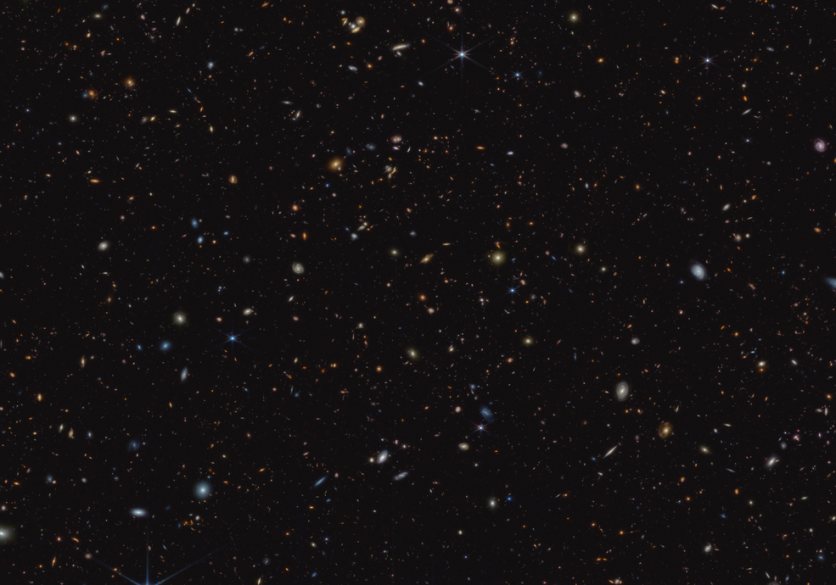NASA's James Webb Space Telescope is shedding light on the formation of the early universe by uncovering bursts of star formation.
The telescope's JWST Advanced Deep Extragalactic Survey (JADES) program, one of its largest initiatives, is dedicated to studying faint and distant galaxies.
Even though the data is still being analyzed, JADES had already identified hundreds of galaxies that existed when the universe was less than 600 million years old. Moreover, the team has observed galaxies brimming with young and hot stars.

Epoch of Reionization
Marcia Rieke, co-lead of the JADES program from the University of Arizona in Tucson, expressed the team's desire to answer crucial questions about the assembly of the earliest galaxies, the speed of star formation, and the factors that lead to the cessation of star formation in certain galaxies.
As part of the JADES program, Ryan Endsley from the University of Texas at Austin investigated galaxies that emerged between 500 and 850 million years after the big bang, a significant period known as the Epoch of Reionization.
During this time, the universe was filled with a gaseous fog that rendered it opaque to energetic light. The clearing of this fog and the transition to a transparent state, known as reionization, has been attributed to active supermassive black holes or galaxies filled with young and hot stars, according to NASA.
Endsley's team utilized Webb's Near-Infrared Spectrograph (NIRSpec) instrument to examine these galaxies and found strong signatures of recent and intense star formation, indicating that these early galaxies were proficient at producing hot and massive stars.
The ultraviolet light emitted by these bright stars ionized the surrounding gas, leading to reionization.
Read Also : NASA's Webb Spots Massive Plume from Saturn Moon Spanning Nearly the Distance from LA to Buenos Aires
Earliest Galaxies
The JADES program also aims to uncover the earliest galaxies when the universe was less than 400 million years old. By studying these galaxies, astronomers can gain insights into the differences in star formation between the early universe and the present.
Through the redshift phenomenon, which stretches the light from faraway galaxies to longer wavelengths, astronomers can estimate the distances and ages of these galaxies.
Webb has revealed nearly a thousand extremely distant galaxies with redshifts above 8, indicating an age younger than 650 million years and surpassing previous observations.
Utilizing Webb's Near-Infrared Camera (NIRCam) instrument, Kevin Hainline and his team from the University of Arizona employed photometric redshifts to identify more than 700 potential galaxies that were present between 370 million and 650 million years following the big bang.
The remarkable abundance of these galaxies surpassed initial projections and showcased the exceptional resolution and sensitivity of Webb when observing these remote galactic entities.
The discoveries made by Webb's JADES program provide valuable insights into the early stages of the universe and challenge existing assumptions about star formation during that period.
Related Article : Have You Seen Uranus' New Snaps? NASA's James Webb Captures Stunning New Images of the Planet

![Apple Watch Series 10 [GPS 42mm]](https://d.techtimes.com/en/full/453899/apple-watch-series-10-gps-42mm.jpg?w=184&h=103&f=9fb3c2ea2db928c663d1d2eadbcb3e52)



